In a world where societal norms and beauty standards are constantly evolving, Niki Geux stands out by challenging conventions and exploring self-expression, and inspiring personal growth. For TELL ME ALL YOUR SECRETS, an editorial in hube no. 2, Davey Sutton captured Geux on the streets of Paris. Niki’s path and dedication has made them a captivating force in the evolving world of modeling. We sat down to discuss how modeling might move beyond superficial aesthetics.
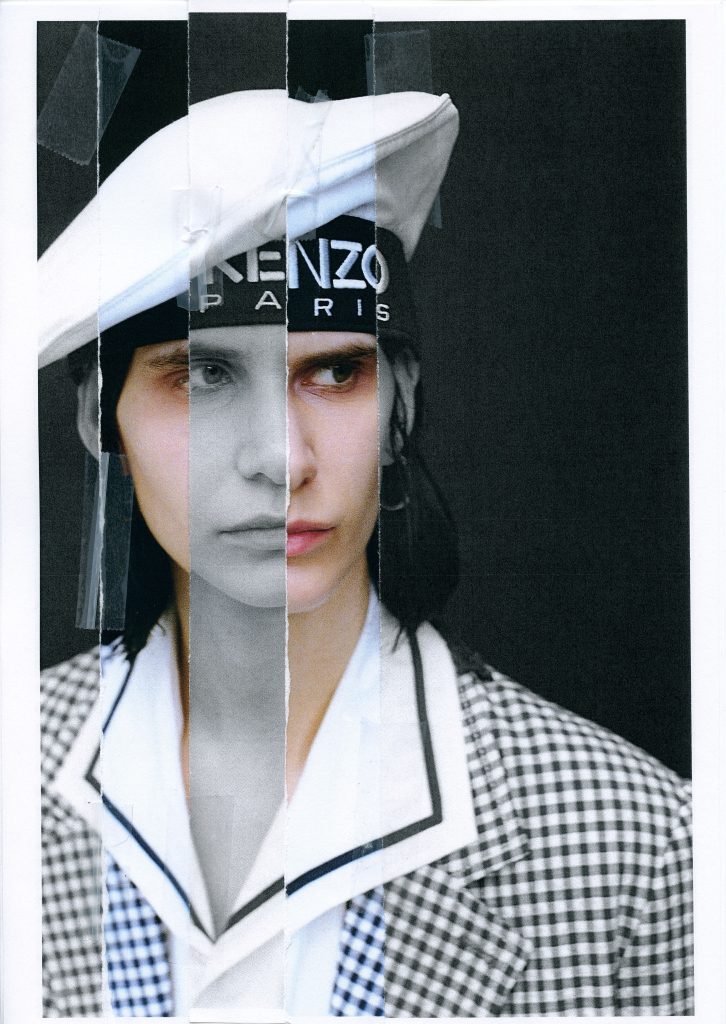
hube: Everyone has a unique story about finding their passion. Can you tell us yours and walk us through the first steps of your modeling career?
Niki Geux: When I started modeling, I was still in Fashion Design school in Eindhoven. I was scouted on the streets in Antwerp when I was there with my class on a day trip. I tried modeling for a year and a half, but I figured out I wanted to finish my school first. Getting a diploma has always been a priority, because my parents didn’t finish school. Once achieved, I took a year off to decide what I wanted to do next. I realized fashion design was not an area I wanted to continue with. My friends suggested to go back to modeling and I contacted Paparazzi (now Platform).
h: It’s no surprise that the fashion industry heavily influences consumers’ perception of beauty and self-image, particularly given the ever-growing impact of social media. Has your perception of beauty and self-image changed since you began modeling?
NG: Yes, it definitely changed my perception. I have seen many faces of what is called ‘beauty’ in the industry with a lot of ups and downs. When I started modeling, social media was just starting; having followers nor collaborating with brands was important. At my beginnings, I looked very feminine, but with time it has evolved to more raw. It definitely impacted the jobs I received and the people I worked with.
h: Historically, attributes associated with the “feminine” have been employed against men (and vice versa) in derogatory ways. How do such ideas hold up today?
NG: People start to be more open to change. You see brands having crop tops and very short shorts for men on the runway as you can see women being in casual, streetwear or oversize; it’s more about style than gender then! I see it as an healthy change, you shouldn’t have to conform to your attributed gender to fit in public spaces. Here comes the role of fashion, expressing yourself, standing and showing what’s inside.
h: On Platform’s website, your biography describes you as a “non binary anti-model.” How does your identity influence or impact your approach to modeling?
NG: Being a non-binary model still feels recent for me. I have been working as a ‘woman’ for many years. Not because I wanted to be perceived as such, but because it took a long time for me to figure myself out. When would the market be ready, how would people react, etc… I feel that fashion (reflect of society) is into genderless clothing but still not 100 percent ready for non-binary models. It will take a while for everyone to understand what being a non-binary person is. Though, I can’t wait to see what future holds!
h: What is your most surprising source of inspiration?
NG: Every job is different. I try to be as open as I can be and keep a wide perspective on everything. I am very easy with projecting subjects and giving my own twist to them. I really love poetry and Greek history. The storytelling, the way they dressed, etc… When I work on editorials, I try to make an inside world.
h: Your presence in the modeling world serves as a powerful statement, transcending aesthetics and inviting viewers to celebrate the potential for self-expression. From your perspective, what role do models play in the creative process?
NG: It’s funny actually, when I started modeling, I was told I look too angry or dark for runway, editorials, etc, and now when I try to look softer, I always get told to look more angry! I try to be more versatile now, not more feminine, but more friendly. I feel I was in this role for so long, I want to try something new; show a different side of me. Recently, I have worked on less dark/strong projects, and I am excited to see the result.
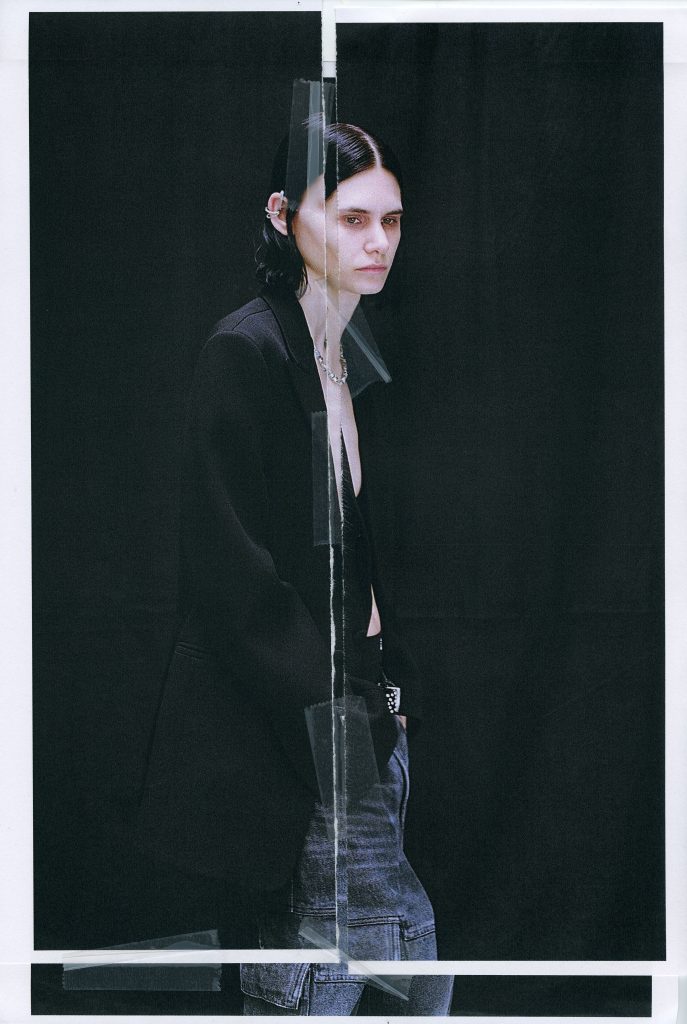
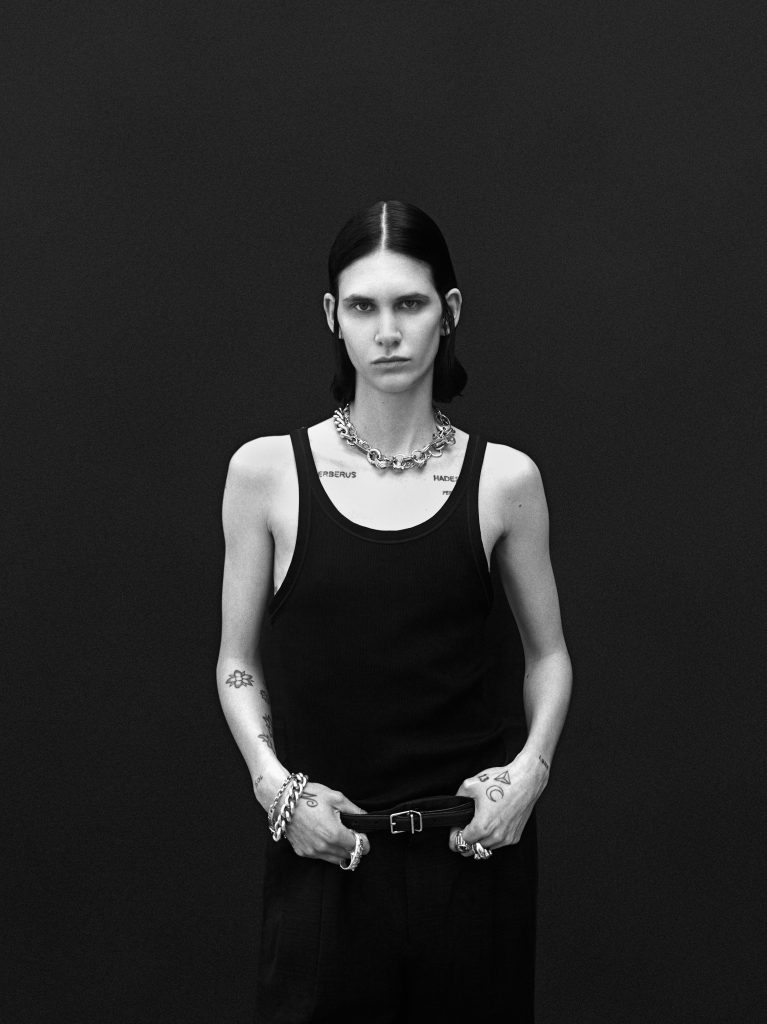
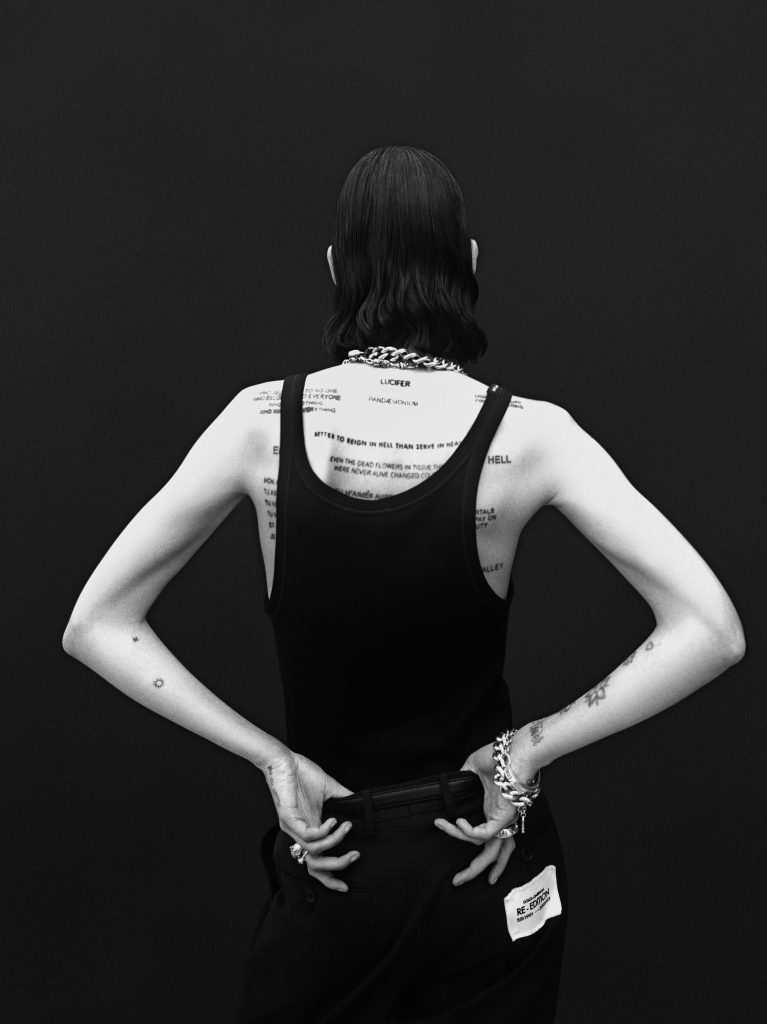
h: Aside from working with futuristic and prominent designers like Rick Owens, John Galliano, and Ferragamo, your life is full of exciting artistic projects. Can you tell us about a fashion collaboration, campaign, or project that you are particularly proud of?
NG: I loved shooting with Juergen Teller x Rick Owens for System Magazine. We shot the story in Concordia, Italy, where Rick Owens’ factories are. We were there for two days shooting around it and the town itself. It was really nice to see where the process of creation happens; Concordia feels like it is a Rick Owens town; it even hold Owenscorp Bar. This immersion fulfilled me and I keep incredible and vivid memories of it!
h: Fashion designers often blur the line between reality and fantasy. How do you experience this fusion of elements, and what are your thoughts on the power of fashion to challenge such ideas of reality and fantasy?
NG: I love creative designers the most. I love seeing them do what they want instead of following mainstream fashion. I am really happy that there are also young designers at very big houses, showing their talent and being there for their creativity. Fashion shows are the place to transmit a universe; they are the hint & essence of the collections that will then become more ‘wearable’ lines. I am really happy that talents still do what they love, and know how to navigate between the history & DNA of a brand and the expression of their imagination.
h: If you could collaborate with any artist or designer, who would it be and what kind of project would you create?
NG: A very classic one, I love Saint Laurent so much. Working with Anthony Vaccarello is at the top of my wishlist.
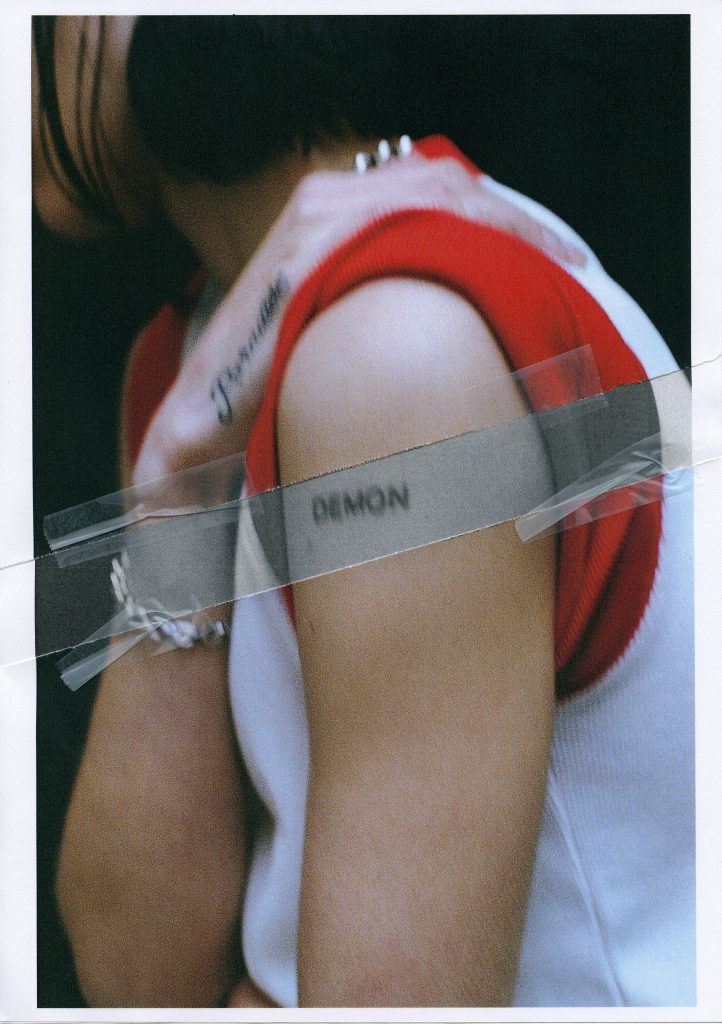
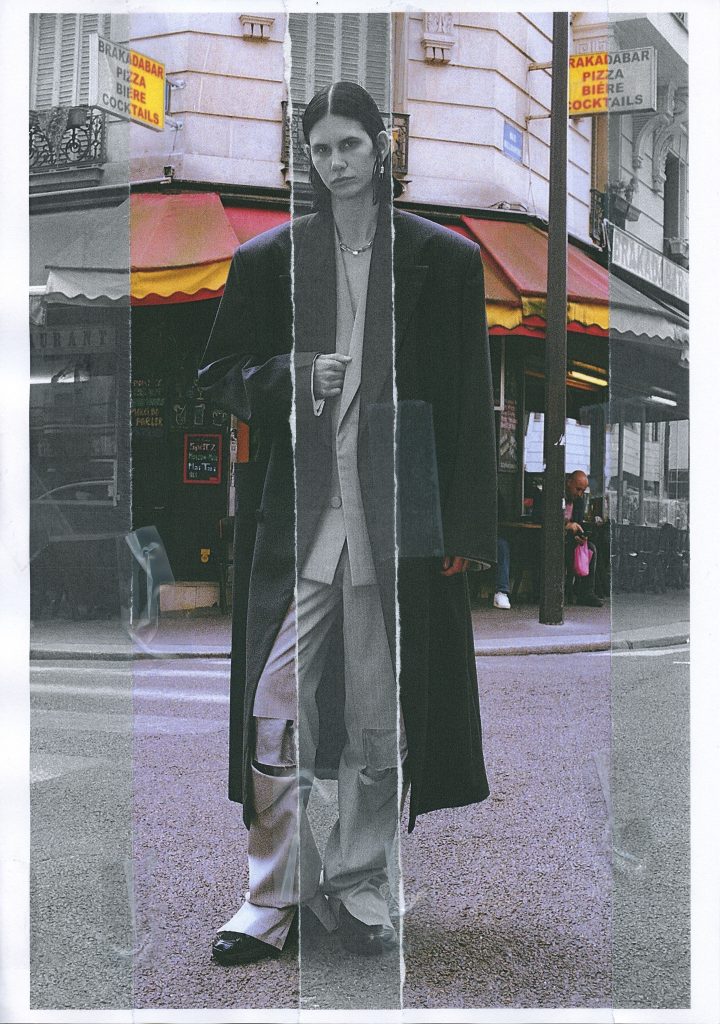
Photographer: DAVEY SUTTON
Stylist: GABRIELLA NORBERG
Makeup: CYRIL LAINE @ AGENCE SAINT GERMAIN
Hair: SAYAKA OTAMA @ WSM
Model: NIKI GEUX @ PREMIUM MODELS PARIS
Photo Assistant: BRUNO MCGUFFIE
Fashion Assistant: KIM MUNRAYOS
Studio Assistant: ELISA JUGE-HOLTERMANN
Retouching: EURSA MAJOR
This is an excerpt from an editorial published in the second issue of hube magazine. For the full experience, you can buy a copy here.

